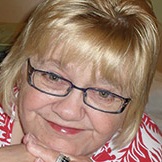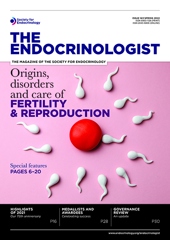Caroline Marquis describes her personal experience of living with Turner syndrome as a patient.
How did you discover that you had Turner syndrome?
My story is unusual in that doctors always knew there was something wrong with me but, despite numerous hospital admissions, a diagnosis of Turner syndrome was not made until I was 24 and pregnant with my first child.
'It was 3 days after my son’s birth that I was to learn from my gynaecologist and his colleague (a genetic consultant) that I had Turner syndrome, and that was the reason for my short stature.'
I was born in 1957. For my generation, diagnosis of Turner syndrome typically followed referral to a consultant for lack of pubertal development. However, I had spontaneous puberty and started a regular menstrual cycle at the age of 15.
Did you suspect you might have fertility problems?
At the age of 21, when I got engaged, my mother took me aside and told me that the doctors did not envisage me having normal puberty, etc., and perhaps I might not be able to have children. I then arranged an appointment with my GP, at which I said I wished to know if I could have children. The GP said that I had developed more than they had expected and that only a gynaecologist could give me an answer. I was referred to a gynaecologist at Aberdeen Royal Infirmary. After tests and examinations, I was told they could not say for definite, but I had two functioning ovaries and a womb (which I was told was of a slightly abnormal shape). They said to go ahead and try for a family. There was still no Turner syndrome diagnosis.
Did you receive special care during your pregnancy?
Fast forward three years and, after being married for nine months, I became pregnant after only two months of us trying to start a family. I was immediately referred by my GP to Aberdeen Maternity Hospital, due to my short stature of 4′5″ (135cm), so that my pregnancy could be monitored by a consultant gynaecologist and obstetrician. This turned out to be the same consultant that I had previously seen when I was 21.
How did your pregnancy proceed?
My pregnancy continued smoothly, although regular scans to monitor the baby’s growth showed I had placenta praevia and my baby would definitely be delivered by caesarean section. The placenta praevia also meant that my consultant wanted to admit me into hospital at 37 weeks of gestation, a week before my elective caesarean section at 38 weeks. This was due to the risk of early labour and the 66-mile journey I would have to get to hospital.
What led to the diagnosis of Turner syndrome?
During my pregnancy, my consultant asked whether I would mind seeing a colleague of his, who was interested in people of short stature, such as myself. Whilst I agreed and was subsequently seen by his colleague, because of the excitement of preparing for our new arrival, I never gave it a lot of thought. On the arranged date in November 1981, I gave birth to a bouncing baby boy who weighed in at 7lb 10ozs. It was 3 days after my son’s birth that I was to learn from my gynaecologist and his colleague (whom I discovered was a genetic consultant) that I had Turner syndrome, and that was the reason for my short stature.
What implications did the diagnosis have for you?
The consultants told me I was extremely fortunate to be fertile, and that, if I wanted more children, I shouldn’t wait, as they didn’t know how long I would be fertile for. They also recommended that I had an amniocentesis test due to my higher risk of having a child with a chromosome abnormality.
At the end of 1982, we decided we would like to have another child. After months of trying, despite my regular menstrual cycle, nothing happened. My gynaecologist arranged for bloods at a specific point in my cycle, to check my ovulation. Those tests came back fine and, shortly afterwards, I fell pregnant with our second child.
How was your next pregnancy?
I was monitored closely from 12 weeks of gestation. At 18 weeks, I had the recommended amniocentesis, and 4 weeks after that we learned that no abnormalities had been found and that our baby was fine. Shortly after this, I suffered a threatened abortion, so was put on bedrest for a few weeks. We also learned we were having another boy.
As with my first pregnancy, I had regular scans. At 36 weeks it was decided that I would deliver by caesarean section again, as my baby was going to be too big for me to deliver him naturally. Our second son weighed in at 8lbs.
What follow-up care did you and your sons receive?
Both babies had chromosome analysis at birth. The gynaecologist and geneticist continued to take an interest in me and our sons. As the consultants had expected, I had premature menopause, starting when I was 29 years old. Results of sample analyses from my ovaries, taken at the time of my caesarean sections, showed that my ova count was that of a woman 10 years older than my chronological age. I appreciate how fortunate I was to be able to conceive two children naturally, given that my karyotype is 45X,O.
Caroline Marquis
with thanks to the Turner Syndrome Support Society (UK)
The Turner Syndrome Support Society (UK) is a national support group for individuals with Turner syndrome and their families. It offers accurate information and support. It works closely with the almost 30 clinics for adults with Turner syndrome that are currently running throughout the UK, and is a Society for Endocrinology-approved patient support group.







